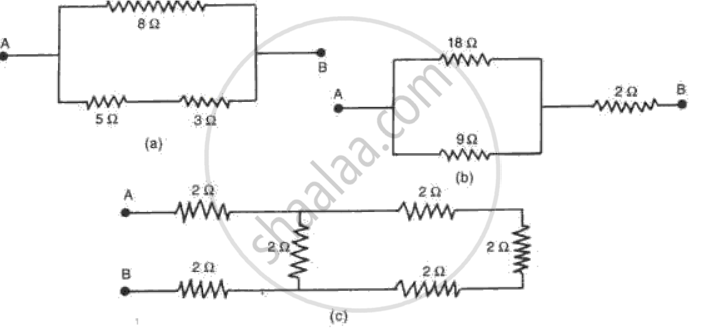Advertisements
Advertisements
Question
How is the electric potential difference between the two points defined? State its S.I. unit.
Solution
The potential difference between two points is equal to the work done in moving a unit positive charge from one point to the other.
It's S.I. unit is Volt.
APPEARS IN
RELATED QUESTIONS
How much work is done in moving a charge of 2 C across two points having a potential difference of 12 V?
The unit for measuring potential difference is:
What is Ohm's law? Explain how it is used to define the unit of resistance.
The values of potential difference V applies across a resistor and the corresponding values of current I flowing in the resistor are given below:
| Potential differences, V (in volts) | : | 2.5 | 5.0 | 10.0 | 15.0 | 20.0 | 25.0 |
| Current, I (in amperes) | : | 0.1 | 0.2 | 0.4 | 0.6 | 0.8 | 1.0 |
The potential difference between the terminals of an electric iron is 240 V and the current is 5.0 A. What is the resistance of the electric iron?
What current will be taken by a 920 W appliance if the supply voltage is 230 V?
What is the combined resistance of each of the networks between A and B shown in fig. ?

What do you understand by the resistance of a wire?
A 10 m long wire of a particular material is of reistance 5Ω What will be the resistance of 5m long wire of same material and the same thickness.
What does the positive and negative sign of potential convey?
